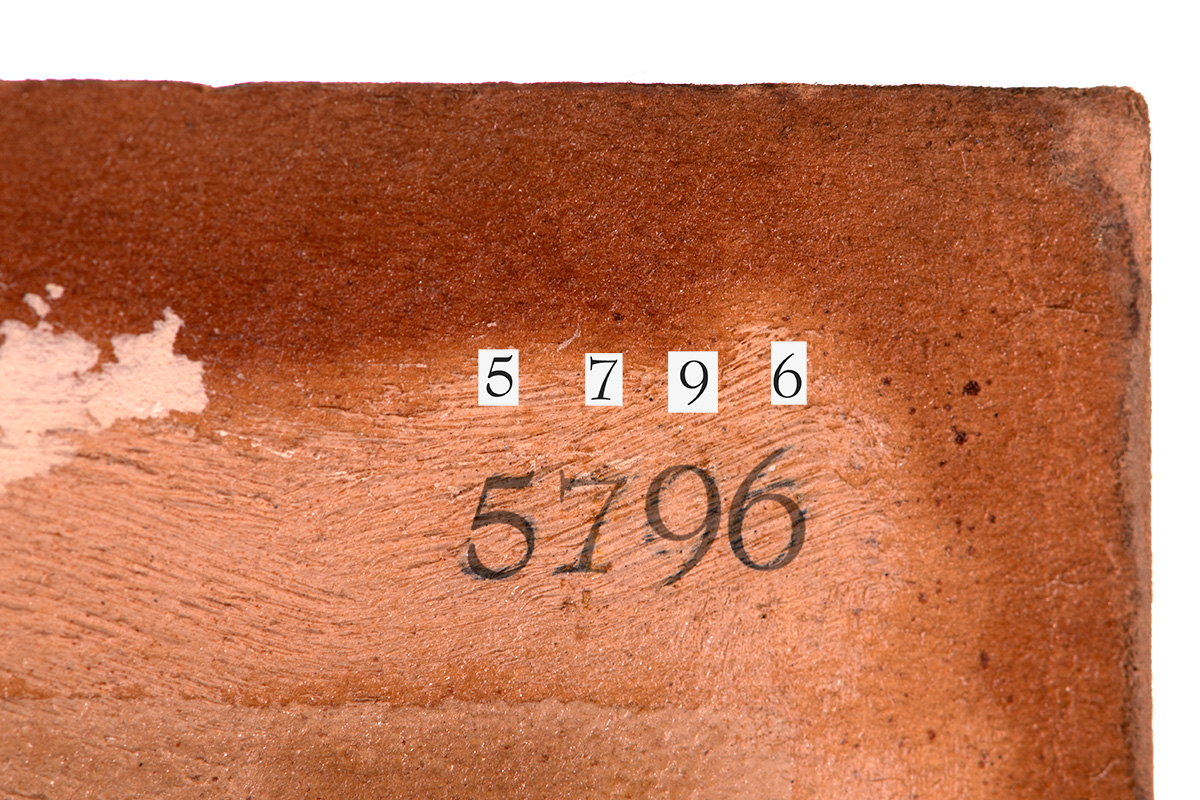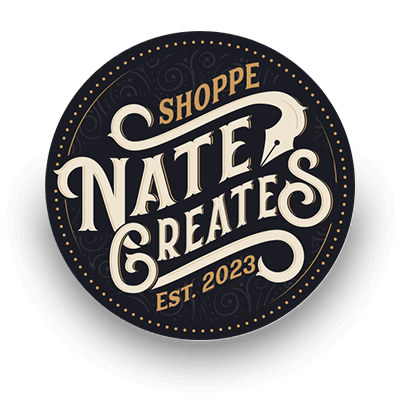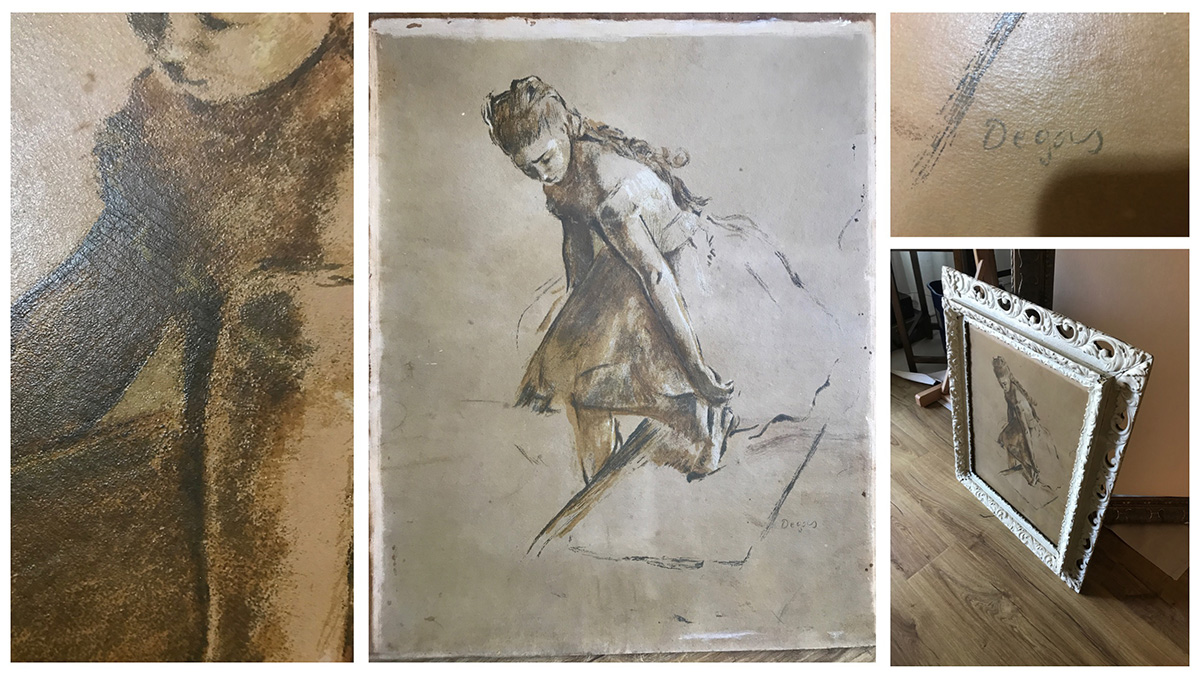Browsing through the treasure trove of items at the Goodwill bins, I stumbled upon a remarkable find—a Degas print! At first glance, it appeared authentic. It had age and texture to it. Up lose you could see what appeared to be ink cracking. And on the back, as if being a clue to its provenance, there was a handwritten name and address. It was addressed to a woman that was president of the Chicago Heart Association during the War years. What was it doing in Oregon? And could it be authentic? How did it wind up in a thrift store? I would spend the next six weeks trying to track down it’s origins and in the process gain an education in the Impressionists, Chicago history, and how to spot a fake.
The Initial Fascination
Even looking at photos of the artwork today—it has a certain beauty. It was a nice “artwork.” It was the classic portrayal of a ballerina putting on her slipper, on a craft-tone paper. It had hints of ink color and it was definitely old. When you took it from the frame, the edges had lead white paint, and there was a varnish on it that, with it’s crackle, seemed authentic. The woman’s name on the back, “Ruth Pearce McEldowney” was a real person, serving as president of the Chicago Heart Association in the 1940s. This pulled me deeper into its intriguing narrative.
The Mysterious Font
As a graphic designer, the one thing that stood out to me was this slightly obscured font that appeared to be part of the paper. The numbers, “5796” seemed like the should mean something. Was it the type of paper Degas used? That seemed odd. Also old, the type of font was actually not used until the 1920s…perhaps it was printed after Degas. Little did I know but these numbers would actually be the solution to the puzzle. You can also see in this image the texture of the piece. It’s compelling!

Unraveling the Mystery
While I delved into the history of Ruth, learning of her own past, of how she had a relative related to Anais Nin, and Chicago connections that were at the edges of wealth, it seemed feasible that this could have been a valid piece. There was history. Not only that, Chicago had a large part in the success of early Impressionsists in America. Had a Degas print gotten lost?
The Pawn Stars Wasted $150
I even went as far as paying $150 to have the art appraisers from Pawn Stars take a look at it and give me their best judgement. I learned they know little. I would solve the riddle before their response, but let’s say…they were off by a couple $1,000.
The Font Reveals…
After a bit of madness as I went further down the rabbit hole (even going to the point of accidentally dropping the print and damaging it’s edge), I came across a print from the 1930s. It was for a Degas lithograph “La Barre” by Raymond and Raymond NY. And guess what it had in the upper right hand corner…a series number. Not this number but the exact same font. Ahhh….so it was nothing more than a cheap lithograph, probably worth $40. While a bit of a downer, it was also extremely satisfying. I’d bested the appraisers, and I’d learned about an ordinary woman with a remarkable past. I learned to appreciate Degas, the Impressionists, and the role forgers. Was this truly an attempt at forgery? I think it was. I think in the depression, someone tried to pawn it off, and eventually it made its way as a donation to the Chicago Heart Association. I think they recognized it’s fakeness…and it went to someone’s home…it moved across the states from Chicago to Oregon. And nearly seventy years later, found itself in a bin pile of art in a thrift outlet.
Conclusion and Ultimate Satisfaction
So what do I do with this? I’d originally purchased it for the frame, but I also learned the frame was authentically painted in lead white. I decided the best thing to do was simply return it back to the outlet bins. And that’s what I did. And that day, after dropping it off, while pursuing other bins in the outlet, I look over and see this regular hold it up, a big smile on his face-intrigued by his good fortune. And all I could do was laugh and let him have his fun.


0 Comments